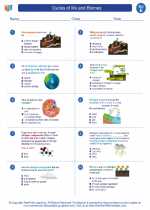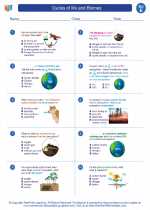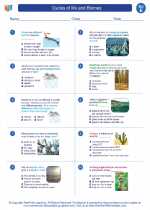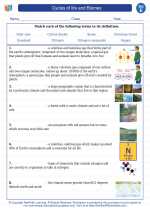Types of Grains
There are two main categories of grains: whole grains and refined grains. Whole grains contain all parts of the grain kernel – the bran, germ, and endosperm – while refined grains have been processed to remove the bran and germ, leaving only the endosperm.Whole Grains
Whole grains include foods like whole wheat, brown rice, oats, quinoa, and barley. These grains are rich in fiber, which aids in digestion, and are also a good source of various nutrients such as B vitamins, iron, magnesium, and selenium.Refined Grains
Refined grains are found in foods like white flour, white rice, and products made with these ingredients. While some refined grains are enriched with certain nutrients, they generally lack the fiber and other important nutrients found in whole grains.Health Benefits of Grains
Including grains in your diet can have numerous health benefits. Some of these include:- Providing energy: Grains are a major source of carbohydrates, which are the body's primary source of energy.
- Supporting digestive health: The fiber in whole grains can aid in digestion and help prevent constipation.
- Reducing the risk of chronic diseases: Consuming whole grains has been associated with a lower risk of heart disease, stroke, and certain types of cancer.
- Weight management: Whole grains can help with weight management due to their fiber content, which can promote a feeling of fullness.
Study Guide for Grains
To study grains effectively, consider the following points:- Understand the difference between whole grains and refined grains, including their nutritional content and health implications.
- Learn to identify different types of whole grains and their uses in cooking, such as whole wheat, brown rice, oats, quinoa, and barley.
- Explore the health benefits of consuming whole grains and how they contribute to overall well-being.
- Consider the role of grains in various cultural cuisines and traditional dishes around the world.
- Examine the impact of grain consumption on personal dietary choices and how to incorporate a variety of grains into a balanced diet.
◂Science Worksheets and Study Guides Fifth Grade. Cycles of life and Biomes
Study Guide Cycles of life and Biomes
Cycles of life and Biomes  Worksheet/Answer key
Worksheet/Answer key Cycles of life and Biomes
Cycles of life and Biomes  Worksheet/Answer key
Worksheet/Answer key Cycles of life and Biomes
Cycles of life and Biomes  Worksheet/Answer key
Worksheet/Answer key Cycles of life and Biomes
Cycles of life and Biomes  Worksheet/Answer key
Worksheet/Answer key Cycles of life and Biomes
Cycles of life and Biomes  Vocabulary/Answer key
Vocabulary/Answer key Cycles of life and Biomes
Cycles of life and Biomes  Vocabulary/Answer key
Vocabulary/Answer key Cycles of life and Biomes
Cycles of life and Biomes 

 Worksheet/Answer key
Worksheet/Answer key
 Worksheet/Answer key
Worksheet/Answer key
 Worksheet/Answer key
Worksheet/Answer key
 Worksheet/Answer key
Worksheet/Answer key
 Vocabulary/Answer key
Vocabulary/Answer key
 Vocabulary/Answer key
Vocabulary/Answer key

The resources above cover the following skills:
LIFE SCIENCE (NGSS)
Ecosystems: Interactions, Energy, and Dynamics
Students who demonstrate understanding can:
Develop a model to describe the movement of matter among plants, animals, decomposers, and the environment.